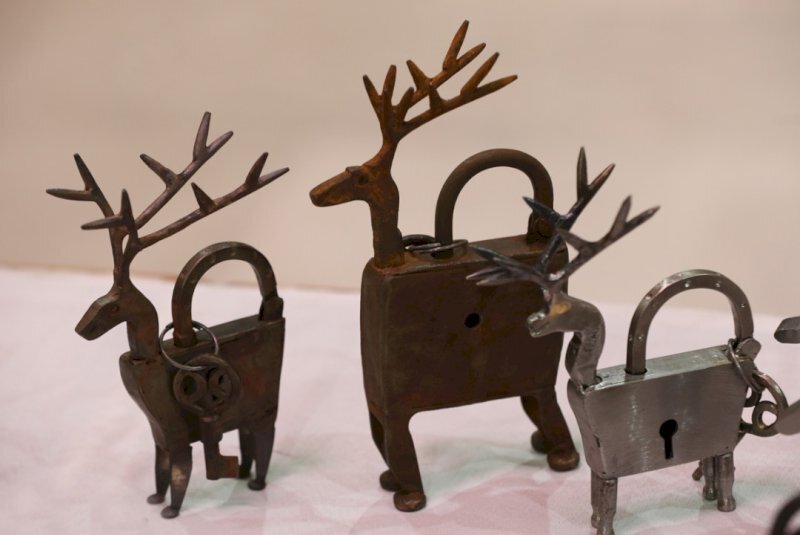Tourism ministry hosting exhibit of traditional locks

TEHRAN – A collection of traditional locks has been put on display at the headquarters of the Ministry of Cultural Heritage, Tourism, and Handicrafts in Tehran.
The five-day exhibition showcases a variety of bizarre-shaped locks made of iron and copper, CHTN reported.
According to organizers, these works of traditional Ghoflsazi (locksmithing) are completely original and one-of-a-kind as the artist uses the old patterns of locks.
Available evidence suggests that locks have been made in Iran since at least the second millennium BC. The most ancient lock, dating to the 13th century BC, was excavated at Tchogha Zanbil, a UNESCO World Heritage in southwest Iran. The lock consisted of a bolt and a tumbler and was probably used on a wooden door, according to Encyclopedia Iranica.
In addition to animals, many new shapes for locks made of steel were inspired by objects and vessels such as the cradle, kashkul (a bowl in which dervishes put the alms and food given to them), suitcase, and lantern, as well as all kinds of geometric shapes.
Throughout the Islamic period in Iran, locks were made in all shapes and sizes. In the first centuries after the introduction of Islam (7th-9th centuries) in Iran, locks followed the same style as those of the Sasanians.
According to the Encyclopedia, from the 10th century onward, however, lock-making went through major changes. In addition to the previously mentioned shapes, figural locks in the form of animals and birds became popular. Nearly all animals, such as the horse, lion, goat, ram, camel, rabbit, and water buffalo, as well as fish and all kinds of birds, were fashioned in locks.
With the rise of the Safavids (1501-1722) to power, there was a major evolution in lock-making. The Safavids' love of steel arms and other steel implements encouraged locksmiths to use this metal for locks, which were previously made of bronze and brass.
In the course of history, numerous mechanisms are found in Iranian padlocks, including barbed spring, bent spring, helical spring, shackle spring, notched shackle, hook and revolving catch, and notched shackle with rotating discs, as well as combination and multiple mechanisms.
Until not long ago, every bazaar had a section for locksmiths (bazaar-e ghoflsazha), but the importation of machine-made locks from the West drove the locksmiths out of the city bazaars. Those in the villages, however, managed to survive until the 1970s.
The exhibition of traditional locks will be running through May 11.
AFM

Leave a Comment